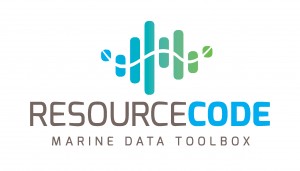Producible Assessment#
Introduction#
This toolbox estimates WEC energy production using the ResourceCode wave data as an input and capture width data to simulate the behaviour of the considered WEC. The tool comes with a built-in case study based on the generic two-body heaving converter presented in [Babarit2012]. It should be emphasised that for practical reasons, this tool cannot be too computationally intensive and the underlying modelling is therefore associated with significant assumptions. The energy production estimates generated by this tool are therefore only indicative and should be considered with caution.
Underlying model#
The case study is modelled using linear boundary element method in the frequency domain. More on the model itself can be found in [Babarit et al., 2012]_. The PTO strategy is pure linear damping. Capture width curves are established using the frequency domain model over the frequency range covered by the RESOURCECODE database for 20 different values of damping coefficients (ranging from 500 to 16000 kN.s/m). For every single seastate considered, a brute force optimisation is carried out to work out the best damping setting. In other words, for every hourly seastate considered, the 20 different damping values are tried and the one yielding the highest energy production is considered optimum.
In an attempt to take into consideration the nonlinearities, which reduces power production in the most energetic seastates, but cannot be accounted for by the linear model, a correction factor based on wave steepness has been introduced. More details on this factor and on the way it is implemented can be found in section F of [Pascal2019].
Babarit, A., Hals, J., Muliawan, M. J., Kurniawan, a., Moan, T., & Krokstad, J. (2012). Numerical benchmarking study of a selection of wave energy converters. Renewable Energy, 41, 44–63. https://doi.org/10.1016/j.renene.2011.10.002
Pascal, R. C. R., Gorintin, F., Payne, G. S., Darbinyan, D., & Pérignon, Y. (2019). Influence of resource definition on defining a WEC optimal size. Proceedings of 13th European Wave and Tidal Energy Conference
- class resourcecode.producible_assessment.PTO(capture_width, s)#
PTO object, storing capture width, wave spectrum, and computing PTO data such as time series of wave power, absorbed power, mean power, median power, PTO damping
- static compute_spectrum_moment(f, s, n=0)#
Computes n-th moment of a spectrum
- Parameters:
f (numpy.array) – frequency values
s (numpy.array) – wave spectrum
n (int) – moment order
- Returns:
moment value
- Return type:
float
- get_cumulative_power()#
Compute PTO cumulative power
- get_power_pto_damp()#
Compute absorbed power, mean power, median power, PTO damping time series
- interp_freq()#
Checks if wave frequency and capture width frequency are the same at a given tolerance. If not, interpolates the capture width table
- is_same_freq(tolerance)#
Checks if wave frequency and capture width frequency are the same at a given tolerance
- Parameters:
tolerance (float) – tolerance
- Returns:
True if same frequency vector (if everything under tolerance), else return False
- Return type:
bool
- to_csv(csv_path)#
Export computed time series to a csv file
- Parameters:
csv_path (str) – output csv file path
